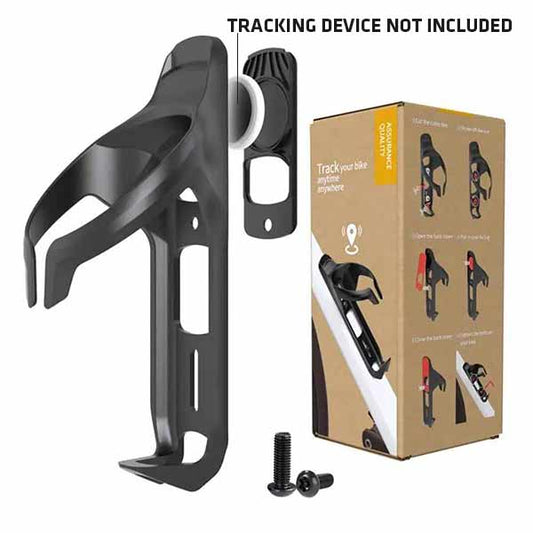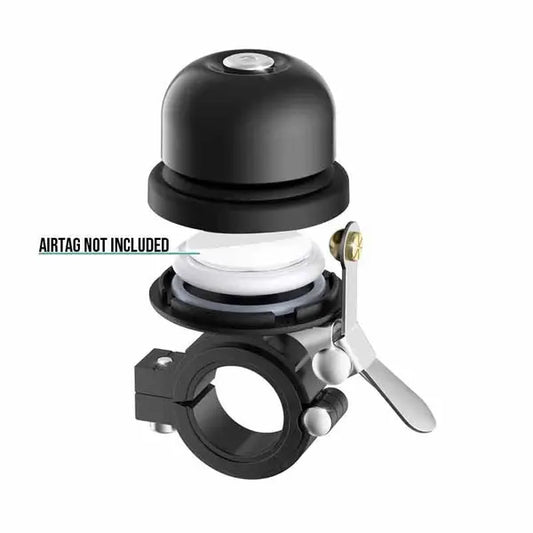The Ultimate Tech Stack for Cyclists in 2025
Cycling in 2025 is defined by both rapid technological innovation and the adoption of WorldTour-proven gear at every rider level. Selecting the ultimate cycling equipment today isn't simply about picking the lightest or most aero components—it's about creating a seamless, safe, and connected experience on the bike. This guide unveils the essential tech gear, trends, and must-have accessories that define the best riding experience for cyclists in 2025.
For those concerned about modern cycling safety, understanding the importance of anti-theft technology is crucial. Bicycle theft is a common problem, but with the right tools and measures in place, it can be prevented. In this article, we'll explore the importance of using...
Smart bikes and next-gen framesets
The backbone of any cyclist's tech stack is their bike. In 2025, the line between "aero" and "lightweight" has blurred, with manufacturers like Colnago, Specialized, and Scott pushing radical new frame designs that maximize both speed and versatility.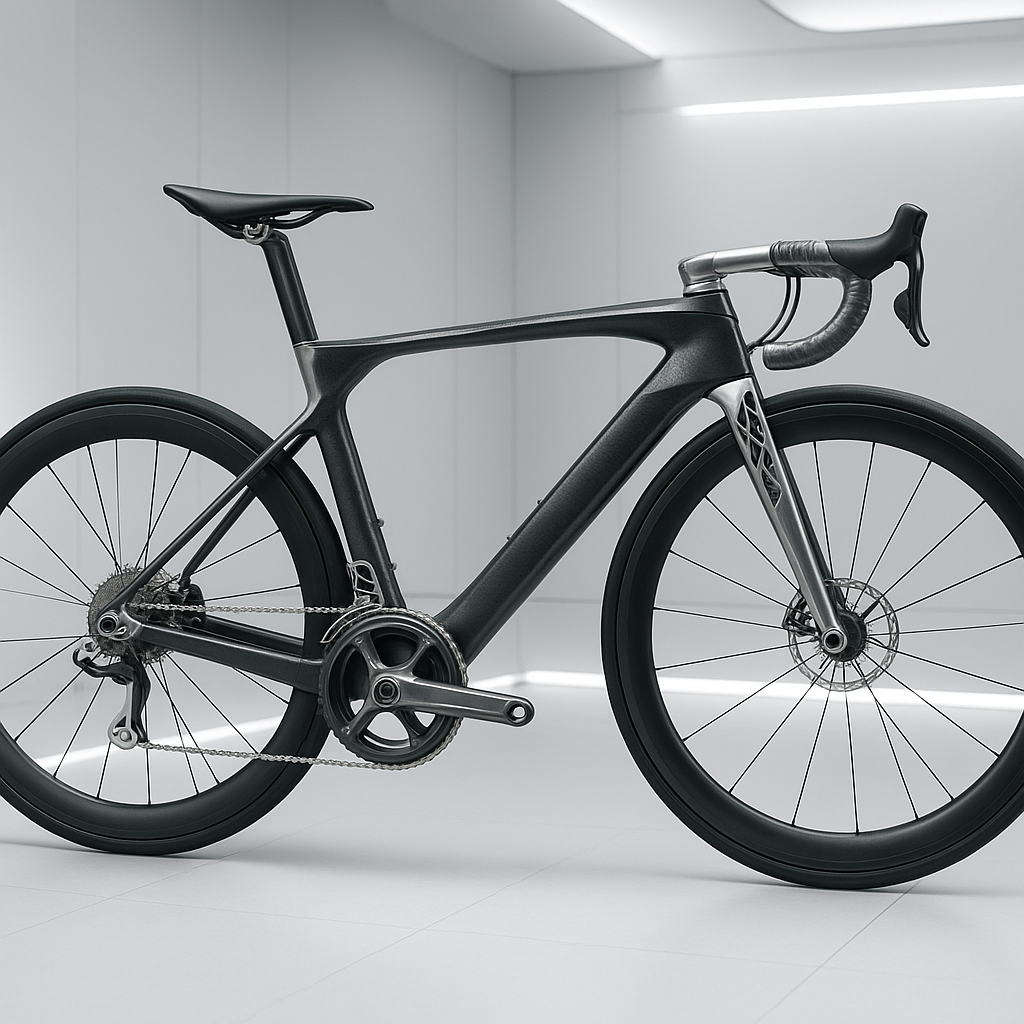
Frame innovation has accelerated dramatically since the UCI relaxed certain design restrictions in late 2023. Modern carbon layups now feature variable thickness throughout the frame, allowing engineers to create structures that are simultaneously stiffer at power transfer points while maintaining compliance for comfort. The result? Bikes that perform better in all conditions while reducing rider fatigue.
Leading the charge are European manufacturers who have pioneered new manufacturing techniques. Frames now frequently incorporate strategic titanium or aluminum components alongside carbon fiber, creating hybrid materials that outperform traditional carbon-only construction. These composites allow for thinner tube walls where appropriate and reinforcement exactly where needed.
Emerging materials and 3D printing
Perhaps the most exciting development in frame technology comes from the widespread adoption of 3D printing for critical components. What was once reserved for prototyping has become standard production practice for items like seatposts, bottom bracket shells, and dropout interfaces.
Custom 3D-printed parts now offer more rider-specific performance and comfort. Manufacturers like Pinarello and Trek have developed proprietary processes for creating lattice structures inside components, reducing weight while maintaining strength. This technique allows for personalized rigidity based on rider weight, power output, and even preferred terrain.
Particularly impressive are the new generation of 3D-printed handlebars and stems that incorporate internal routing channels designed precisely to minimize both aerodynamic drag and hydraulic brake friction.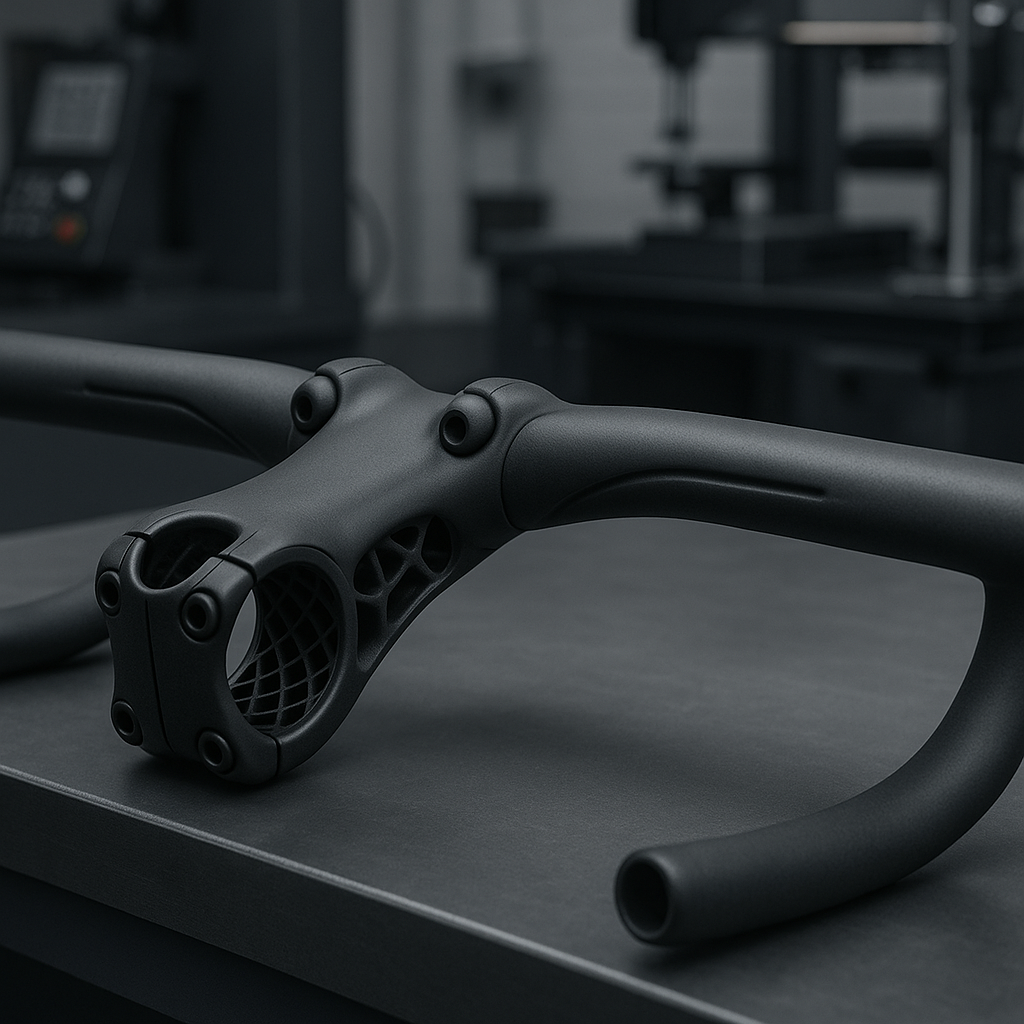
These components feature ergonomic shapes impossible to create with traditional manufacturing methods.
Encourage readers ready to experiment with innovative frame accessories to check out the AirTag Bike Mount Case with Secret Security Screws, which cleverly combines cutting-edge tech with bike security as part of a modern cycling stack.
Drivetrains, wheels, and the evolution of components
Component technology continues to evolve, with wireless electronic shifting, integrated power meters, wider tubeless tires, and carbon wheelsets optimized for new frame geometries.
The battle between groupset manufacturers has reached new heights in 2025. SRAM's latest Red AXS wireless system now incorporates haptic feedback through the shift levers, subtly communicating gear position and battery status. Meanwhile, Shimano's Dura-Ace Di2 has achieved remarkable weight savings through new materials while extending battery life by nearly 40% over previous generations.
Perhaps most interesting is Campagnolo's approach with Super Record EPS, which now features a revolutionary adaptive shifting algorithm that learns rider preferences and automatically adjusts to terrain and riding style. This system integrates with biometric data from wearables to optimize shifting patterns as fatigue sets in during long rides.
Across all brands, we're seeing two clear trends: integration of power measurement directly into drivetrains and the continued rise of 1x setups (single front chainring) even for road applications. Modern cassettes now regularly feature 9-36t spreads, providing adequate range for most terrain without the weight and complexity of front derailleurs.
The wider tire revolution
Wide tires have completed their revolution. What started as a gravel-inspired experiment has become standard across road disciplines. Modern rims are designed specifically around 28-32mm tires, with internal widths consistently exceeding 21mm.
The performance benefits are undeniable. Wider tires run at lower pressures reduce rolling resistance while improving comfort and traction.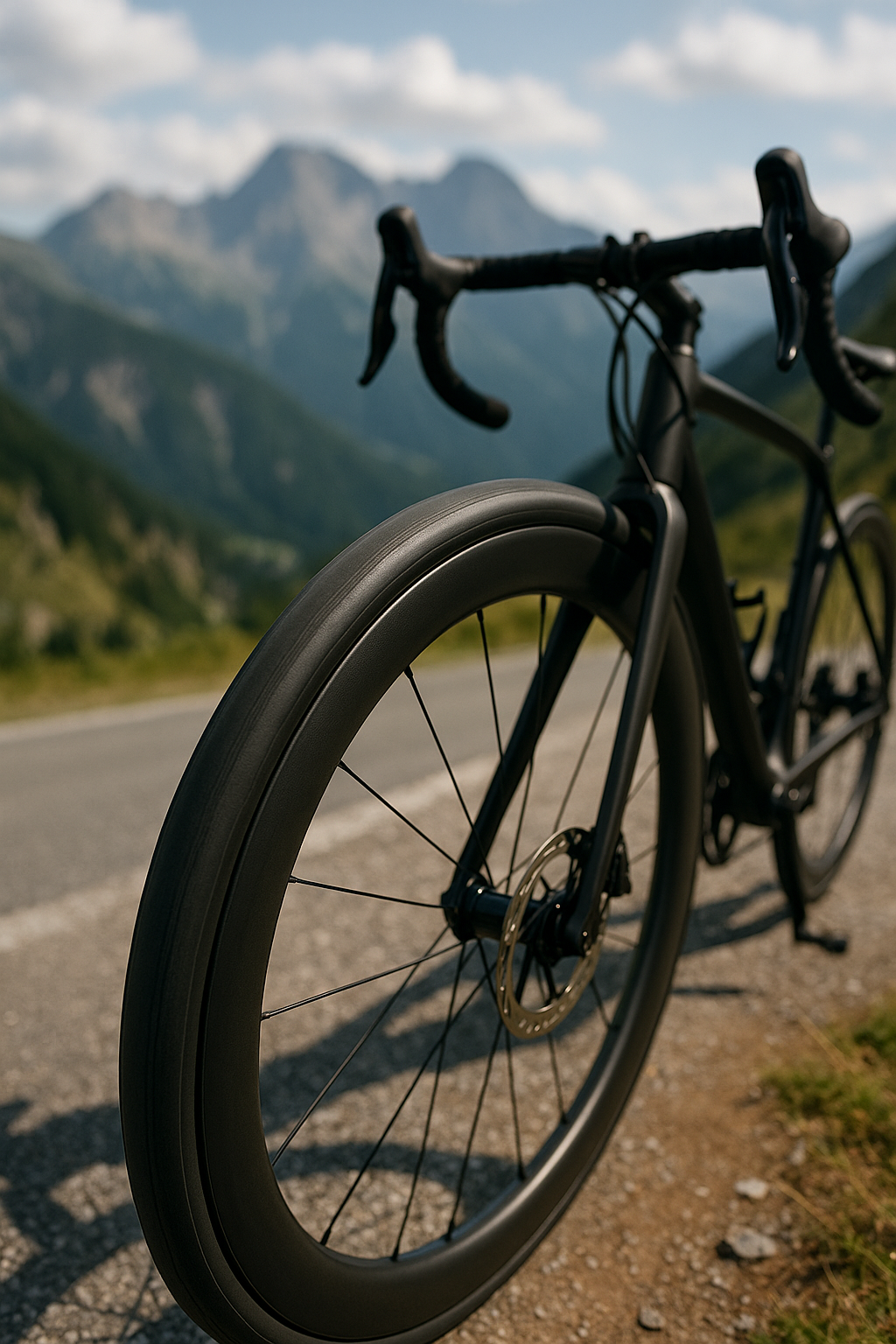
When paired with modern hookless rims, this combination actually enhances aerodynamic performance by smoothing airflow around the wheel-tire interface.
This transition has been fully embraced at the highest levels of the sport. Teams at the Tour de France routinely select 28mm tires even for flat stages, with some riders like Tadej Pogačar preferring 30mm rubber for mountain stages where descent control provides crucial advantages.
Add value with an interlink to By integrating AirTag technology into a hidden bike mount, the Guards Armor Bike Mount offers cyclists a powerful tool to combat bike theft., illustrating how securing wheels and frames is part of the total "component strategy" in a tech stack.
Advanced electronics: cycling computers, smart sensors, and AI integration
Electronics are no longer just for tracking speed and mileage. In 2025, AI-enabled safety systems, smart rear-view cameras, and integrated navigation create a safer and more data-rich ride.
Modern cycling computers have evolved into comprehensive riding companions that do far more than display metrics. The latest devices feature high-resolution color screens with exceptional visibility even in direct sunlight.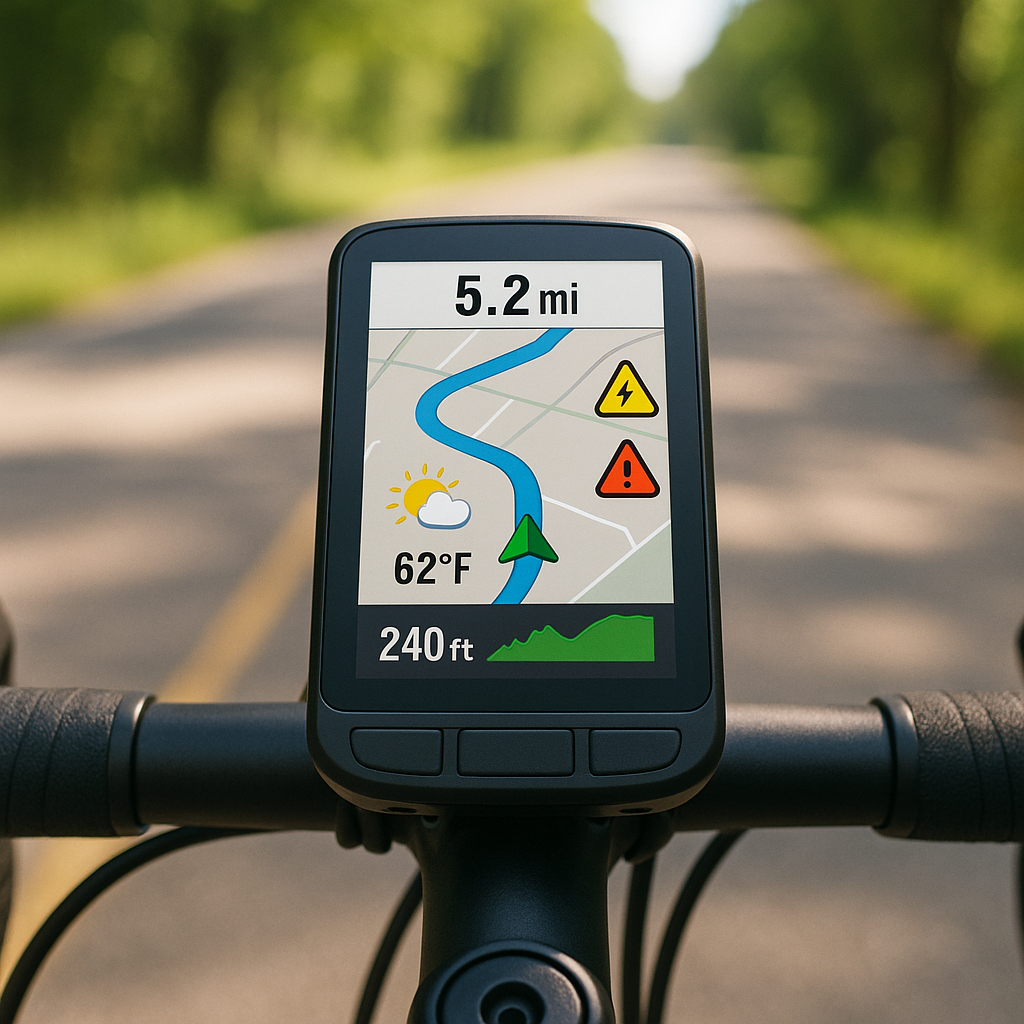
More importantly, they serve as integration hubs for the entire riding experience.
Artificial intelligence capabilities now actively contribute to rider safety and performance. Forward-facing cameras analyze road surfaces to warn of hazards, while rear-facing systems monitor approaching traffic and alert riders to potentially dangerous situations. These features leverage machine learning algorithms that improve with use, becoming increasingly accurate at distinguishing genuine threats from benign situations.
Integration between devices has reached new heights. Today's computers seamlessly connect with smartphones, action cameras, electronic shifting systems, and even smart helmets or glasses to create a unified ecosystem. This allows for features like automatic incident detection with emergency contact notification or real-time group position awareness when riding with friends.
Perhaps most impressive are the navigation capabilities that now include dynamic rerouting based on real-time traffic conditions, weather patterns, and even road surface quality data. This information is gathered both from official sources and anonymized data from other riders, creating increasingly detailed maps of cycling conditions.
Battery technology has kept pace with these advanced features, with most units now offering 20+ hours of operation even with all sensors active. USB-C fast charging and wireless charging options mean devices can be quickly topped up during coffee stops.
Safety and bike security: modern solutions for 2025
Modern cycling tech stacks put a premium on safety, combining wearable gear, advanced lighting, and theft deterrence through integrated tracking.
The evolution of cycling safety equipment has accelerated dramatically in recent years. Modern helmets now routinely incorporate MIPS (Multi-directional Impact Protection System) or equivalent technology as standard. But the real innovation lies in connected features—impact sensors that can detect crashes and automatically notify emergency contacts with precise GPS coordinates.
Lighting systems have undergone a similar transformation. The latest bike lights aren't just brighter; they're smarter. Adaptive brightness systems adjust output based on ambient light conditions, while rear lights now incorporate radar to detect approaching vehicles and adjust flash patterns accordingly. Some systems even project a virtual bike lane onto the road surface, creating a visual safety boundary for both the rider and passing motorists.
When it comes to bike protection, theft prevention technology has moved well beyond traditional locks. Discrete tracking devices have become standard equipment for valuable bikes. The integration of Apple AirTags and similar trackers into bike components allows owners to monitor their bike's location constantly, with some systems even triggering automatic alerts if the bike moves unexpectedly.
Insurance companies have begun offering premium discounts for bikes equipped with these comprehensive security systems, recognizing their effectiveness in both deterring theft and aiding recovery. Law enforcement agencies in major cycling cities have established specialized protocols for responding to location data from stolen bikes, improving recovery rates significantly.
Recommend the AirTag Bike Bottle Holder as an innovative way to seamlessly blend hydration and security—a next-step upgrade for riders prioritizing both performance and theft protection.
Smart accessories: from sunglasses to integrated tools
Performance isn't just about the bike—smart accessories such as HUD-enabled sunglasses, multi-tool integration, and smart tire pumps round out the ultimate stack.
Eyewear has evolved from simple protection to becoming sophisticated information displays. Leading brands now offer sunglasses with heads-up displays (HUDs) that project critical riding data directly into the rider's field of vision.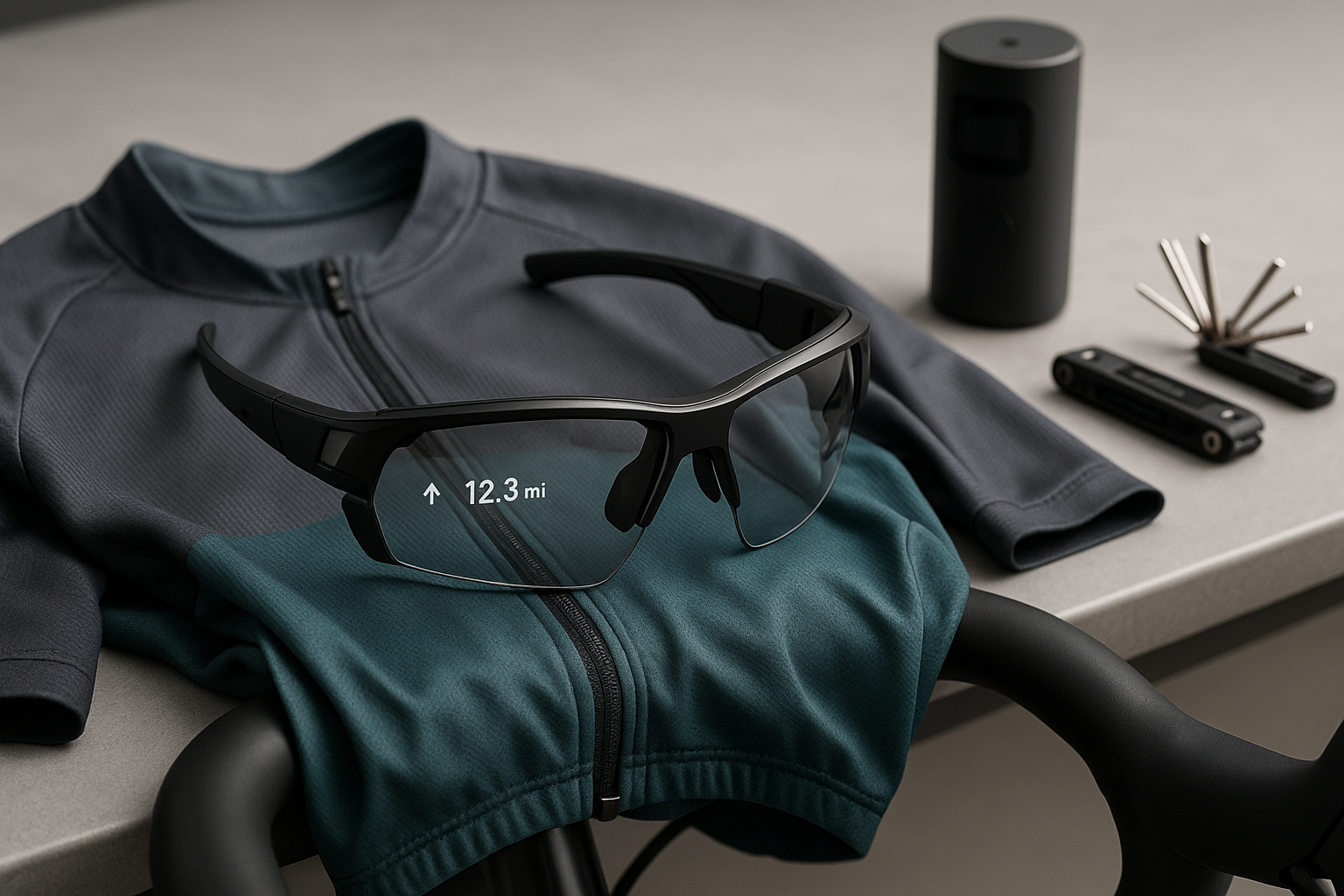
These systems allow cyclists to monitor speed, power, heart rate, and navigation cues without looking down at their computers, significantly enhancing safety and performance.
The integration extends to audio systems built into some models, providing turn-by-turn directions or performance prompts without requiring earbuds that might block important environmental sounds. Photochromic lenses that adjust tint automatically based on light conditions have become standard, eliminating the need to swap lenses for changing conditions.
Tool innovation has focused on integration and practicality. Hidden storage solutions within frames and components now house compact multi-tools that include everything from hex wrenches to spoke keys and tubeless tire plugs. The latest mini-pumps incorporate digital pressure gauges accurate to within 1 psi, eliminating guesswork during roadside repairs.
Hydration systems have similarly evolved, with bottles now featuring integrated purification systems for refilling from natural water sources on long rides. Some bottles incorporate temperature regulation technology to keep fluids cool in hot weather, while others feature built-in electrolyte dispensers that release minerals based on ride duration and intensity.
Even clothing has joined the tech revolution. The latest cycling garments feature fabrics with variable properties that adapt to conditions—opening microscopic vents as body temperature rises and closing them to retain heat when needed. Some jerseys now incorporate impact protection panels that remain soft and flexible during normal riding but instantly stiffen upon impact.
Conclusion
2025 marks a tipping point where pro-level cycling tech is more accessible than ever. The ultimate tech stack goes beyond weight savings: every device, accessory, and security feature should contribute to a smarter, safer, and more enjoyable ride. Riders should tailor their stack by evaluating innovation, real-world performance, and proven safety gains.
As we've seen throughout this exploration of modern cycling technology, the most effective approach isn't necessarily adopting every new gadget, but rather creating a thoughtfully integrated system where components work together seamlessly. The best tech stack is one customized to your specific riding style, preferred terrain, and performance goals.
Consider auditing your current setup and evaluating which technological advances would provide the most significant benefits for your riding. Whether it's upgrading to a frame with integrated security features, adopting AI-enhanced safety systems, or investing in smart accessories that streamline your riding experience, the right choices will enhance both enjoyment and performance.
The cycling technology landscape will undoubtedly continue evolving rapidly, but the core principles remain: seek equipment that improves safety, enhances performance, and ultimately makes riding more enjoyable. By thoughtfully building your personal tech stack with these principles in mind, you'll be well-positioned to get the most from your cycling experience in 2025 and beyond.
Frequently asked questions
What makes up a complete cycling tech stack in 2025?
A 2025 cycling tech stack includes a next-gen lightweight/aero frame, wireless electronic shifting and power integration, wide tubeless tires, a smart cycling computer, AI-backed safety systems, and hidden security devices like AirTag mounts.
How do AirTag mounts improve bike security?
AirTag mounts discreetly track your bike's location, enabling fast recovery or deterrence in case of theft. New mounts double as bottle cages or integrate under components for stealth protection.
Is wider always better for road cycling tires?
In 2025, many pros and enthusiasts use tires up to 32mm for improved speed, comfort, and puncture protection—but always ensure your frame and rims support these widths safely.
Which cycling electronics are must-haves for safety?
Look for rear-facing smart cameras with AI vehicle alerts, wearable lights, and cycling computers with live route safety features.
Are 3D printed bike parts reliable?
Yes, when made by reputable manufacturers. 3D printing now enables custom geometry and unique component features, used even in pro racing, but quality and warranty are key.



